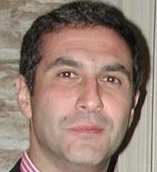The wild month of October ended essentially where it started. However, it was a trying month for market participants.
Fund managers found the conditions to be very difficult. Most financial news and market experts were calling for the end of the great bull market, warning that his was the beginning of an extended selloff.
Yet the bear didn’t roar. By mid-month stocks took flight again.

Active managers
It is interesting to see how poor ‘active managers’ have been performing of late. This month helps explain why, with the sudden ‘whiplash’ in the markets.
Morningstar, the big mutual fund research firm, recently published research showing that 87% of active stock funds were unable to outperform their respective benchmarks so far this year.
A passive portfolio manager would have been down 8% on October 15th, and gone to bed knowing there was nothing they could do.
On the other hand, an active manager in the same situation might take steps to manage the positions, perhaps cutting losers or taking a more defensive stance. Then, without warning, markets reversed course after mid-October and raced skyward.
Dazed and confused
Reading the market commentaries of some prominent active strategies, it was clear that there was genuine confusion about the market’s overall direction.
There are those that feel the markets are still overvalued, and prone to a fall.
Then, there are those who suggest the economy is showing good signs of growth, low unemployment and a clear sign by the U.S. Federal Reserve that rates will remain low.
The Rockledge L2 portfolio has taken a wait and see approach. We’re not convinced that the economy is revving up for a late year rally, and we are also not worried of a complete market unwinding either.
The portfolio remains conservatively positioned – no changes or adjustments were made in October.
Our L2 portfolio lost 4.85%, falling less than the 5.57% fall in the S&P from the 1st through the 15th of October. But, it only gained 7.29% through the end of the month, against 8.35% by the S&P. Slight underperformance, with lower volatility.
Hedgies
Interesting to note, many of the new ‘liquid hedge funds’, often seen as the most active of active strategies, were unable to manage the brief hiccup in the markets this October.
According to my research, long-short equity hedge funds have managed to capture approximately 65% of the upward movements by the S&P 500 Index since 1997, while limiting the drawdowns to 40% of the market.
Looking at the top 10 performers year to date, according to Morningstar, these liquid long short funds, on average, caught 60% of the markets drawdown in October.
However, when markets reversed, they were slow to rebound, grabbing just 30% of the upside.
It points to just how difficult these market conditions are for active managers.
Photo credit: Jim Bauer via Flickr Creative Commons
DISCLAIMER: The reader should not assume that any investments identified were or will be profitable or that any investment recommendations or investment decisions we make in the future will be profitable. Past performance is no guarantee of future results.



